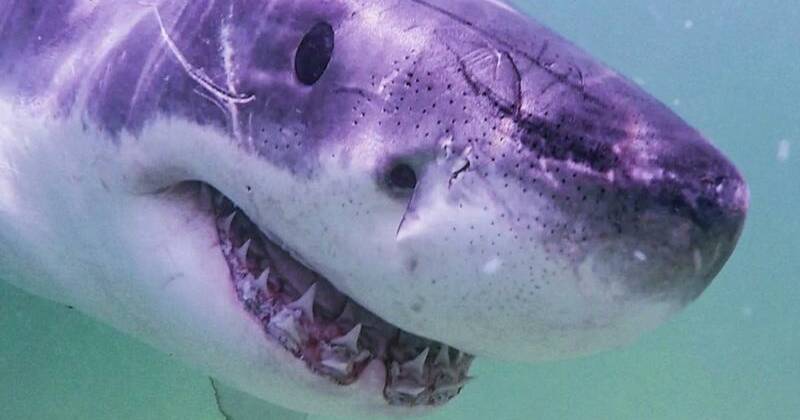
Reports indicate a significant increase in sightings of great white sharks along the north-east coast of the United States, particularly in areas where these apex predators were previously uncommon. This trend has raised awareness among local fishermen, beachgoers, and marine enthusiasts, who are adapting to the presence of these formidable creatures.
Rick Clough, who spent approximately four decades fishing for lobsters and sea urchins off the coast of Maine, experienced his first encounter with a great white shark in July. The shark, measuring around 2.5 meters, was spotted near Scarborough Beach. Clough expressed surprise at the sighting but maintained a level of comfort with the ocean, stating, “I’m not sure I’d want to go urchin diving now.”
Increased Sightings Linked to Seal Population
Local residents and visitors to the chilly waters of New England and Atlantic Canada are learning to coexist with great white sharks, which gained notoriety from the 1975 film Jaws. According to marine biologists, the rise in shark sightings can be attributed to the growing population of seals, a primary food source for the sharks. Despite the growing numbers, experts assert that beachgoers remain generally safe from shark attacks.
Great white sharks can reach lengths of up to 6.1 meters, although most do not attain this size. David Lancaster, a commercial clam digger from Scarborough, recently used a drone to observe a shark measuring approximately 3.5 meters near the town’s popular beaches. He described the experience as both magnificent and a reminder of the need for caution among swimmers.
The frequency of great white shark sightings off Cape Cod, Massachusetts, has notably increased in recent years. The Atlantic White Shark Conservancy has documented hundreds of these sharks over more than a decade. New data suggests that the sharks are venturing even further north, reaching areas such as New Hampshire and Maine, according to Greg Skomal, a senior fisheries biologist with the Massachusetts Department of Marine Fisheries and an experienced white shark researcher.
Data Highlights Expanding Shark Presence
Research indicates a dramatic rise in the number of white sharks detected off Halifax, Nova Scotia, which increased by approximately 2.5 times between 2018 and 2022. This information was published in May in the journal Marine Ecology Progress Series, co-authored by Skomal and his colleagues. Furthermore, the number of sharks recorded in the Cabot Strait, which separates Nova Scotia from Newfoundland, surged nearly fourfold during the same period.
Skomal noted that the average residency of white sharks in these northern waters has also extended, increasing from 48 days to 70 days. This trend suggests that the sharks are becoming more comfortable in these previously less frequented regions.
Despite their size and strength, encounters between white sharks and humans remain exceedingly rare. According to the International Shark Attack File at the Florida Museum of Natural History, fewer than 60 fatal great white shark bites on humans have been documented in recorded history. As sightings continue to grow, scientists and local communities are actively working to understand and manage the evolving dynamics of these marine ecosystems.







